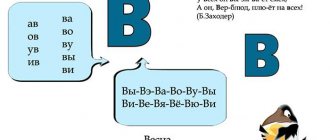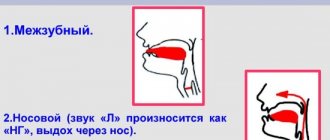Preface
The textbook examines issues of the etiology and pathogenesis of stuttering from the standpoint of modern achievements of psychophysiology, psychology and correctional pedagogy; the clinical and psychological-pedagogical characteristics of neurotic and neurosis-like forms of stuttering are analyzed in detail; modern ideas about the rehabilitation of people who stutter are outlined; for the first time, speech therapy technologies for the formation of fluent speech in people who stutter are presented in an integrative manner; Methodological developments are given for organizing the educational process with students and practitioners mastering this section of speech therapy. The book presents the author's position on the problem of stuttering.
The book is intended for students of defectology faculties, speech therapists, psychologists, and doctors.
This book is intended for students of defectology departments of pedagogical institutes and speech therapists. It is aimed at improving the training of teaching staff and speech therapy assistance to people who stutter. The material in the book corresponds to the program and curriculum for the speech therapy department of defectology faculties.
Currently, stuttering is one of the most pressing problems in speech therapy. It is recognized throughout the world that stuttering is a complex problem in both theoretical and practical aspects. The problem of stuttering has been intensively studied and covered in the literature throughout the 20th century. The scientific development of the problem of stuttering in domestic speech therapy is associated with the names of famous psychiatrists I.A. Sikorsky, N.G. Netkachev and V.A. Gilyarovsky.
Currently, interest in the problem does not decrease; moreover, since 1994, International symposiums dedicated only to the problem of stuttering have been regularly held. These scientific congresses bring together more than a thousand scientists from countries around the world. The international special magazine “Fluen y Disorders” is regularly published, which is also dedicated to this monoproblem. The enormous interest of scientists around the world in the problem of stuttering indicates its relevance.
In domestic speech therapy, an original approach to assessing the clinical picture of stuttering has been developed. Identification of two clinical forms of stuttering - neurotic and neurosis-like - allows us to most fully assess not only convulsive manifestations in the speech of people who stutter, but also personality characteristics both in the initial period of development of stuttering and during its chronicification. In addition to convulsive stuttering, stuttering includes disorders of higher nervous activity, associated in some cases with organic damage to the central nervous system, in other cases with a neurotic reaction. The chronification of the process observed during stuttering usually causes secondary neurotization as a personality reaction to the underlying disease, which makes stuttering a complex pathological process that can accompany a person throughout his life.
Currently, a speech therapist is required not only to know practical techniques for correcting speech for stuttering, but also to understand the holistic clinical and psychological-pedagogical picture of this complex pathological condition, as well as knowledge of the clinical manifestations of neurotic and neurosis-like conditions. Only under this condition can psychophysiological, psychological and psychological-pedagogical data on people who stutter be correctly interpreted, which determines the direction of rehabilitation as well as preventive measures.
This book is an attempt to highlight various aspects of the study of stuttering that are relevant for broad speech therapy practice. In their presentation, the authors rely not only on literature data, but also on the results of many years of research conducted in the “Laboratory of Speech Pathology” of the All-Russian Research Institute named after. V.P. Serbsky and at the Department of Speech Therapy of Moscow Pedagogical State University.
The structure and arrangement of the four chapters of the book corresponds to its main task - to facilitate students' assimilation of the curriculum for the course “Stuttering”.
The first chapter of the textbook “Basic mechanisms of oral speech” gives ideas about its anatomical and physiological mechanisms. A brief description of the respiratory, phonatory and articulatory sections of the peripheral speech apparatus is given; the main structures of the central nervous system and their functions that ensure speech activity are presented; The acoustic characteristics of oral speech are given, which, as a rule, are disturbed when stuttering.
Modern ideas about the systemic organization of speech are presented through a description of the functional system of the speech motor act. Analysis of the violation of the action program (oral speech) through the prism of ideas about the functional system makes it possible to identify the pathogenesis link that leads to stuttering.
The same chapter describes age-related features of the functional system of oral speech. It substantiates the age-related instability of speech motor stereotypes in preschool age and explains the reasons for the selective fragility of the speech system under the influence of various harmful factors.
Chapter two is devoted to stuttering itself: its phenomenology, etiology, clinical and psychological-pedagogical characteristics of stutterers with neurotic and neurosis-like forms of stuttering.
Today, many specialists working in the field of stuttering believe that successful practical work on the rehabilitation of stutterers is hardly possible without careful clinical and psychological-pedagogical differentiation of stutterers. This chapter highlights the most relevant issues of differential diagnosis for broad speech therapy practice. This chapter also presents an analysis of stuttering from a psycholinguistic perspective, since such an analysis makes it possible to consider in a single complex the violation of the speech process during stuttering from the concept to the motor implementation of the utterance. At the end of the chapter, a modern view of some pathogenetic mechanisms of stuttering is given with the rationale for the main directions of corrective action for different forms of stuttering.
The third chapter is devoted to the main directions of comprehensive psychological and pedagogical rehabilitation of people who stutter. It reveals the main content of the tasks of speech therapy work. In this regard, a number of speech therapy technologies are covered in detail: inhibition of pathological speech motor stereotypes; regulation of emotional state; development of the body's motor systems; formation of speech breathing, skills of rational vocal delivery and vocal performance; development of the prosodic side of speech; development of the planning function of speech. Speech therapy technologies are revealed through the content of specific techniques and exercises.
This chapter covers in detail the issues of psychological and pedagogical examination of stutterers of different ages, and also presents various author’s systems of complex psychological and pedagogical influences (Vlasova N.A., Pay E.F., Seliverstov V.I., Cheveleva N.A. , Mironova S.A., Andronova L.3., Nekrasova Yu.B., Shklovsky V.M., etc.). The chapter ends with a description of stuttering prevention methods.
Chapter four is devoted to the organization of the educational process in the “Stuttering” course, which will allow both students and teachers to optimize the educational process on this problem.
The textbook on the section of speech therapy “Stuttering” ends with material that reflects various aspects of practical work with people who stutter.
The textbook is intended for students of defectology faculties, speech therapists, psychologists and doctors.
L. Belyakova E. Dyakova
March, 1998 Moscow
Corrective program for stuttering in children
Stuttering treatment is approached in a comprehensive manner. It depends on the type of disorder - it is neurosis-like or logoneurosis. Therefore, the speech therapist selects the complex individually for each little patient. In any case, the program includes a variety of exercises for stuttering - to establish proper breathing, work with the voice, develop fine motor skills, and strengthen the muscles of the speech apparatus.
Complex for the formation of correct breathing
The goal of working with a child who stutters is to form a diaphragmatic exhalation. We do each exercise for 2–3 minutes.
Breathe with your belly . The baby lies on his back and places his hand on his upper abdomen. Begins to breathe with his stomach. You need to breathe calmly. To make it clearer, you can put a toy on your baby’s tummy.
Let's blow out the candle . The baby holds a strip of paper near his lips (at a distance of 10 cm). Then he gently blows on it so that the piece of paper moves slightly to the side. Try to blow as long as possible.
We depict a tire . The child spreads his arms in front of him in a circle. He exhales and at the same time slowly says “shhhhh” and crosses his arms, wrapping them around his shoulders.
We deflate the balloon . The exercise is similar to the previous one, but instead of the sound “sh-sh-sh” the baby says “f-f-f”.
We pump the tire . The small patient clenches his hands into fists in front of him and slowly leans forward, while pronouncing the sound “ssss” as he exhales.
The fly is buzzing . The child spreads his arms to the sides and back - imitates the wings of a fly. Then, while exhaling, he says “w-w-w” and lowers his hands down.
The crow caws. The baby raises his arms up to the sides. Then at the same time he slowly lowers them, squats and says “K-a-a-a-a-a-r.” The slower he descended and the longer he croaked, the better.
Geese-geese. The baby puts his hands on his belt, slowly leans forward, but does not lower his head down. Then he says, “Gaaaaaaaaaaaaaaaaaaaaaaaaaaaaaaaaaaaaaaaaaaaaaaaaaaaaaaaaaaaaaaaaaaaaaaaaaaaaaaaaaaaaaaaaaaaaaaaaaaaaaakenk” The longer it gets, the better.
Inhalation during each exercise is voluntary when returning to the starting position.
A set of exercises with a child to practice their voice
The baby takes the initial position of the speech apparatus - as for pronouncing the sound “a”, but with his mouth closed (closed lips). The teeth are open, the tongue is spread out and the tip rests on the lower incisors.
Important points: lower the larynx, open the pharynx, as when yawning, raise the velum and small uvula. The neck, arms, head and whole body are relaxed.
Exercise one - mooing. The baby inhales through his nose and, as he exhales, pronounces the sound “m” and sends a stream of air so that the sound resonates on the upper front teeth. Important: the sound is light and short, the lips and upper jaw vibrate if you put your hand on them. This means that the sound has hit the bones of the face - the mask - and is reflected in it.
Exercise two - adding vowels. The starting position is the same, but now the child says the sound “ma”. That is, he first pronounces “m” and then adds “a” - the lips open, the lower jaw drops. But you need to be careful not to let your voice become nasal. Pronounce the sound “ma” in different tones.
Exercise three - we train speech intonation. The starting position is the same. Now you need to add vowels to the sound “m” - “a”, “o”, “u”. It should come out “m-a-o-u.” Then repeat the same thing with the sounds “i”, “e”, “s” - “m-i-e-s”. Avoid tension, clearly articulate all sounds. Vowels should not be extended and should be as similar as possible to a conversational melody.
Exercise four - perform speech and singing intonation. The baby inhales through his nose, pronounces the sound “m” and combines it with any three vowels (for example, “ma” - “mo” - “mu”). Then he inhales again. Then, in one exhalation, he says, for example, “mi” - “me” - “we”.
Important: do not speed up, send sound into the mask, first pronounce all sounds at the same height, then repeat at different ones.
Exercise five - pronounce the consonants “zh”, “z” and “n”. In terms of timbre, “zh” tends to the chest sound, “z” - mixed, “n” - facial, or upper. During pronunciation, sounds must vibrate in the corresponding resonator zones.
Exercise six - we hum like a ship. The baby says the sound “u” in different variations, imitating a small, medium and large ship. That is, he must use three pitches of his voice. The sequence is not important.
Exercise seven - play ball. The child imagines a ball of any size, “takes” it in his hands and hits the floor. At the same time, he counts each blow to 10. Then he counts again, but this time he throws the ball up. The count is carried out as you exhale. When the “ball” hits the floor, the baby’s voice will be lower, and when it flies up, it will be higher. Important: no need to pull your neck up or strain while counting.
Exercise eight - call the dog. The kid imagines that he has a dog and it ran away. You need to call her from different distances - from afar, closer and very close. Let the kid come up with a nickname for the dog and start calling. First, he calls her by name “from afar” 10 times, then pauses and repeats, but “closer”, then pauses again and again calls the dog 10 times when she is already “nearby”. The “closer” the dog comes, the slower you need to say its name.
Exercise nine - calling the dog in one breath. The exercise is similar to the previous one, but you need to call the dog by name without stopping, in one breath. We start with a high voice, moving to a lower one.
Exercise ten - count to ten. In one breath, the baby counts to 10 in three ranges of his voice. After every ten we pause and continue counting in a different key.
Complex for training muscles for stuttering
We offer classes for children to train articulatory and facial muscles. They involve tensing and relaxing different muscle groups. First, the baby tenses them and holds the position for 5 - 10 seconds, after which he relaxes. So baby:
- Throws his head back, strains his neck, then relaxes his neck and head and lowers it down;
- Wrinkles forehead, raises eyebrows;
- Frowns heavily, tensing the muscles between the eyes;
- Closes his eyes tightly;
- Clenches teeth forcefully;
- Smiles widely, baring his teeth and tensing his cheeks;
- Pulls out lips;
- Presses the tongue against the front teeth;
- Pulls the tongue back so that tension appears in it, the bottom of the mouth and neck;
- Yawns three times - lightly, deeply and very deeply. During the last yawn, he closes his eyes and stretches the muscles of his throat and mouth.
In this complex, it is important to focus on the sensations in tense muscles, perform all exercises for stuttering in strict sequence, and relax the muscles well at the end of each exercise. Perform tasks calmly, slowly, but at the same time rhythmically, and do not forget to breathe in the process.





